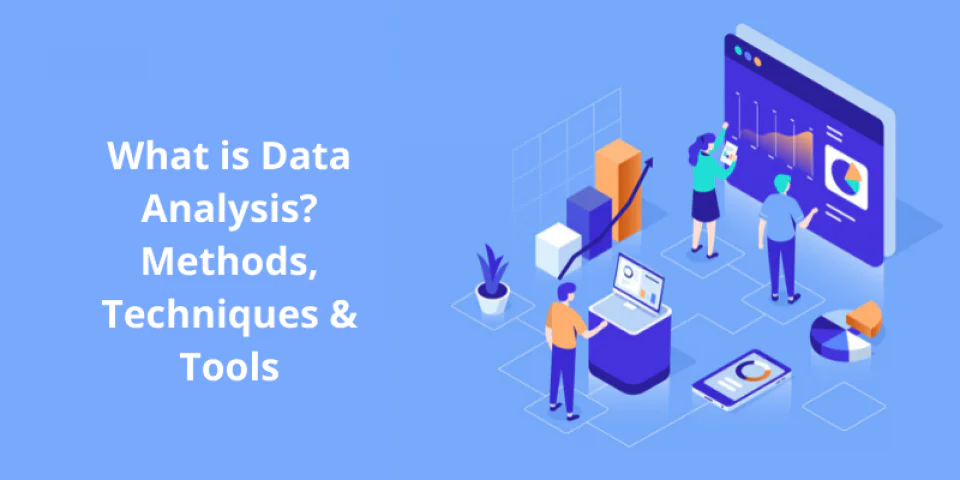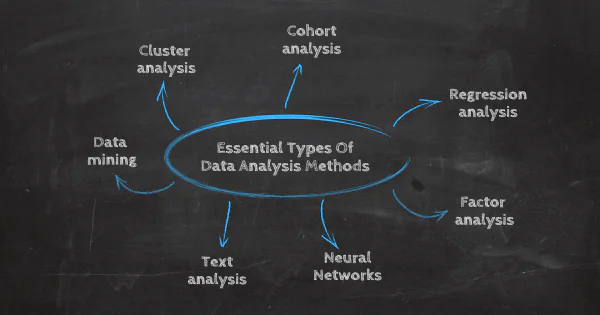
7 Best Data Analysis Methods and Techniques
Data Analysis is the process of analyzing unstructured data and turning it into meaningful information that can best suit business interests. Such actions determine useful insights to determine the best course of action to achieve business objectives within less time. Data analysis tells us about the best estimated time to roll out a product marketing campaign, the effectiveness of in-house team structure, and customer product perception. Ultimately, it serves as a crucial driver to maintain business market positioning. But are you aware of how data analysts turn raw data into valuable information?
In this blog, a range of data analysis methods and techniques are covered, which depend on the type of data in question and the kind of insights businesses are looking for. By the end of this blog, you will have a clear vision of how you can transform raw data into straight-end business intelligence. In this modern information age, data mining has become an absolute necessity for managing business data requirements. No doubt, effective data analysis methods and techniques can respond to such an increasing need with accurate business research results.
Classical and modern data analysis methods used in analysis projects are:
Statistical and mathematical methods
Methods based on machine learning and artificial intelligence
Data visualization and graphical method
Statistical and Mathematical Methods for Data Analysis
Statistical and mathematical methods of data analysis revolve around variables and numbers. These data analytics techniques prove authentic and accurate in the estimation of the final value or near-final value in business operations. The method of data analysis and management are in fact, methods of data mining techniques. It includes:
Descriptive Analysis
Descriptive analysis is an efficient data analysis method to look at past events and situations. By employing this statistical method, one can easily get in-depth ideas to approach future business events. This type of analysis motivates learning from past failures and result in better business plans. It allows us to evaluate past behaviors, events, and decisions more closely to formulate a responsible data-centric approach.
Regression Analysis
Regression analysis enables the modeling of the relationship between a dependent variable with one or more independent variables. This method proves authentic to predict the values of any particular dataset. It is regarded as the most popular and commonly used data analysis method used in retail and financial forecasting businesses etc. There are numerous sub-categories of regression analysis models, such as multiple regression, ridge regression, logistic regression, life data regression, nonlinear regression, and many others. For Example – The price of a product can be predicted by taking other independent variables into account.
Factor Analysis
Factor analysis is a regression analysis technique that is efficient enough to extract the underlying structure of the data set variables. It operates by finding new independent variables (factors) which can best define the dependent variables. It serves as a good tool to search dependent and independent variable relationships for complex data sets like socioeconomic status and psychological scales. FA includes basic data analysis steps, including classification and clustering procedures.
Dispersion Analysis
Dispersion analysis is another data mining method that plays its part in estimating the spread of a data set. It allows you to identify how extended a data set is to measure the variability of objects. It includes two matters: firstly, the variation of elements among themselves; secondly, the average variation value. When the difference between the average and the estimated value is greater, the dispersion ratio is high otherwise, it stands low.
Discriminant Analysis
Discriminant analysis is a powerful data analysis method used in data mining procedures. The method is based upon variable measurements such that to identify patterns to differentiate them from one another or other groups. Classification is the ultimate result of the discriminant analysis method. The type of data analysis method is used in the classification and organization of credit cards into high-risk to low-risk categories, classification of products into subgroups, classification of alcoholics and non-alcoholics in medical studies, etc.
Methods Based on Artificial Intelligence and Machine Learning
These modern methods of data analysis attract data scientists and are a source of extended capabilities to solve business data needs within the shortest interval of time. In addition, such methods can be easily implemented and can be performed by specially designed software tools and systems.
6. Artificial Neural Networks
One of the latest data analysis methods out there is artificial neural networks. It is a biologically inspired data analysis paradigm that allows computers to evaluate observational data. ANN is also called a ‘Neural Network’ as a brain metaphor relating to business information processing. These computational models are interconnected groups of neurons that use artificial intelligence to process data. An advanced form of ANN software is an adaptive system. Adaptive systems can change their structure based on the type of information flowing through their network. It supports several useful applications, such as greater acceptance ability to remove noise from data and improve data quality. Neural Networks have been regarded as promising systems for processing business data, forecasting, and classification of business applications.
7. Fuzzy Logic
Fuzzy logic is yet another applicable data analysis method to practically cope with data mining issues. It is a probability-based data analysis model that comes with a greater potential to extract valuable business data from multiple rich online sources. It is an innovative logic-driven model that traces variables as real numbers in between 0 and 1. The truth value ranges are completely false and completely true. Although the data analysis model consists of parameters for data sets whose value is neither precisely 0 nor 1, such values contain a higher level of noise within the data sets.
Conclusion
There are numerous data analysis methods and techniques mentioned in this blog, each method focuses on addressing different kinds of business data problems. Almost all of the above-mentioned data analysis methods are involved in data mining procedures to find relevant business data sets to achieve business objectives within a minimum time than manual net surfing. Such methods prove a helping hand in looking for data at the right corners of the World Wide Web. You can select data analysis methods and techniques based on the type of business data you are dealing with and also the desired information result. Nowadays, these data analysis methods have become common information build-ups for all business companies and innovations are being made at a rapid rate to further briefly analyze unstructured data into useful information. It’s also worth noting that it’s best to use first-party data rather than third-party ones. Utilizing first party data helps in keeping both your customers and your data secured.
How ITS Can Help You With Data Entry Service?
Information Transformation Service (ITS) provides convenient Data Entry Solutions regardless of any additional investment of staff, resources, or infrastructure. By outsourcing your Data Entry Projects to us your company will be blessed with high-quality and diverse data entry-related options. Such quality service enables your data to be entered in various desirable formats with repetitive, inaccurate, incomplete, grammatically nonsensical words replaced to form better semantic clarity and understanding. Irrespective of the size and complexity ITS Team defines customized packages to directly answer specifically your business big data projects. If you are interested in getting ITS Data Entry Services you can ask for a free quote!




